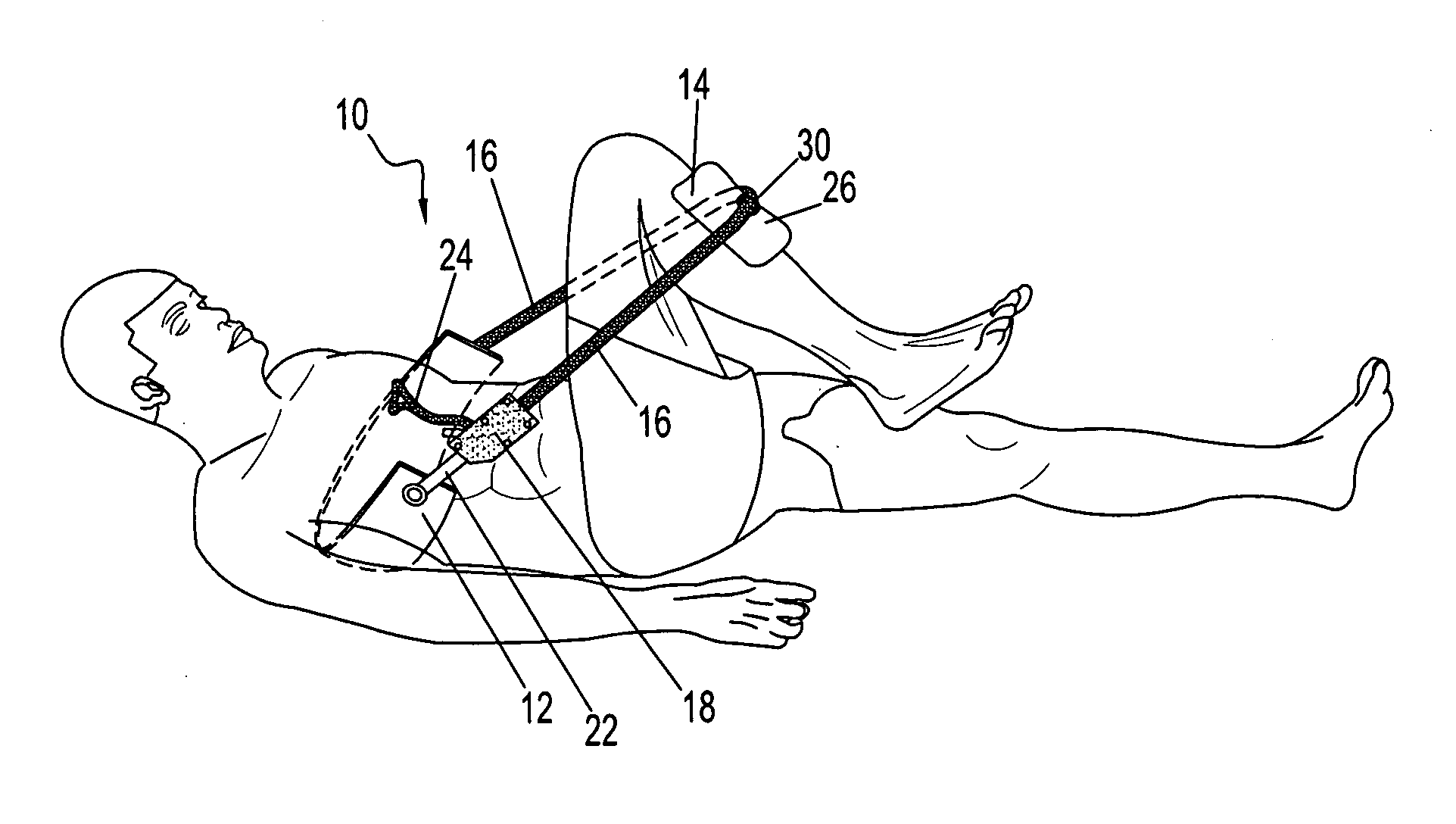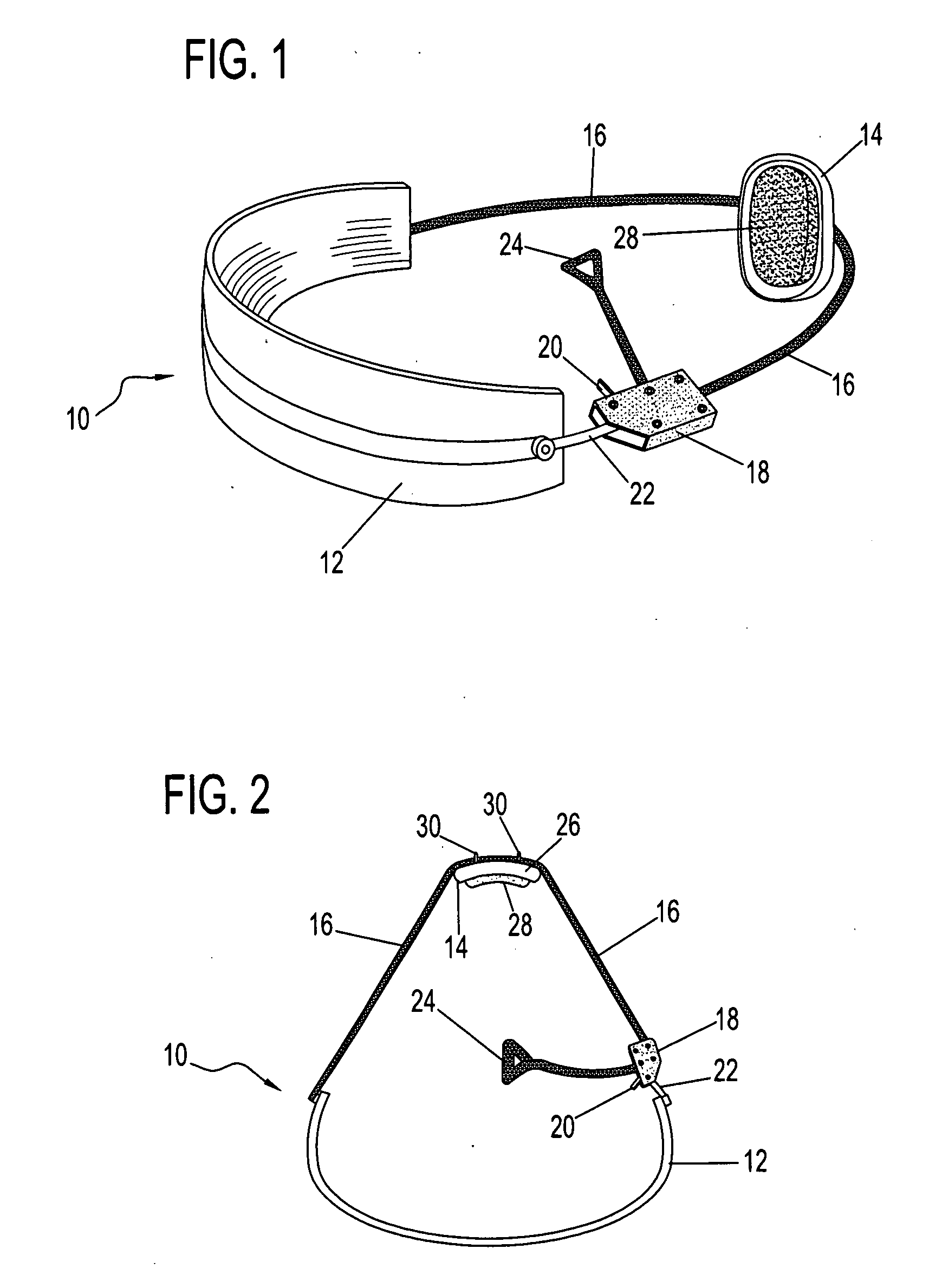Portable lower-body stretching apparatus
a lower-body stretching and portable technology, applied in the field of exercise equipment, can solve the problems of inability to precisely regulate the stretch level, the subject's arms and hands quickly become fatigued, and the knee slips out of the subject's hands, etc., and achieves the effect of easy and quick release of the stretch, easy to put on and take o
- Summary
- Abstract
- Description
- Claims
- Application Information
AI Technical Summary
Benefits of technology
Problems solved by technology
Method used
Image
Examples
Embodiment Construction
[0015]In FIGS. 1-3, there is shown a portable, lower-body stretching apparatus (10), comprised of a back support (12), a knee cradle (14), a flexible line (16), and a line-tensioning device (18).
[0016]The back support (12) is an elongated member, sturdy but pliable in construction, comprised of nylon, leather or other elastomeric material that will conform to the shape of the user's upper back and be comfortable to the user while lying in the supine position. When worn, the back support (12) circumscribes a portion of the user's upper back area, roughly transversing the latissimus dorsi muscles of the upper back, with the ends of the back support (12) located underneath each of the user's arms and resting against the user's ribcage on each side of the user's body. Assuming a user of an average body size and weight, it would be a preferred embodiment of the present invention that the back support (12) would have dimensions of approximately 24-28″ in length, 4-5″ in height, and a maxi...
PUM
 Login to View More
Login to View More Abstract
Description
Claims
Application Information
 Login to View More
Login to View More - R&D
- Intellectual Property
- Life Sciences
- Materials
- Tech Scout
- Unparalleled Data Quality
- Higher Quality Content
- 60% Fewer Hallucinations
Browse by: Latest US Patents, China's latest patents, Technical Efficacy Thesaurus, Application Domain, Technology Topic, Popular Technical Reports.
© 2025 PatSnap. All rights reserved.Legal|Privacy policy|Modern Slavery Act Transparency Statement|Sitemap|About US| Contact US: help@patsnap.com



